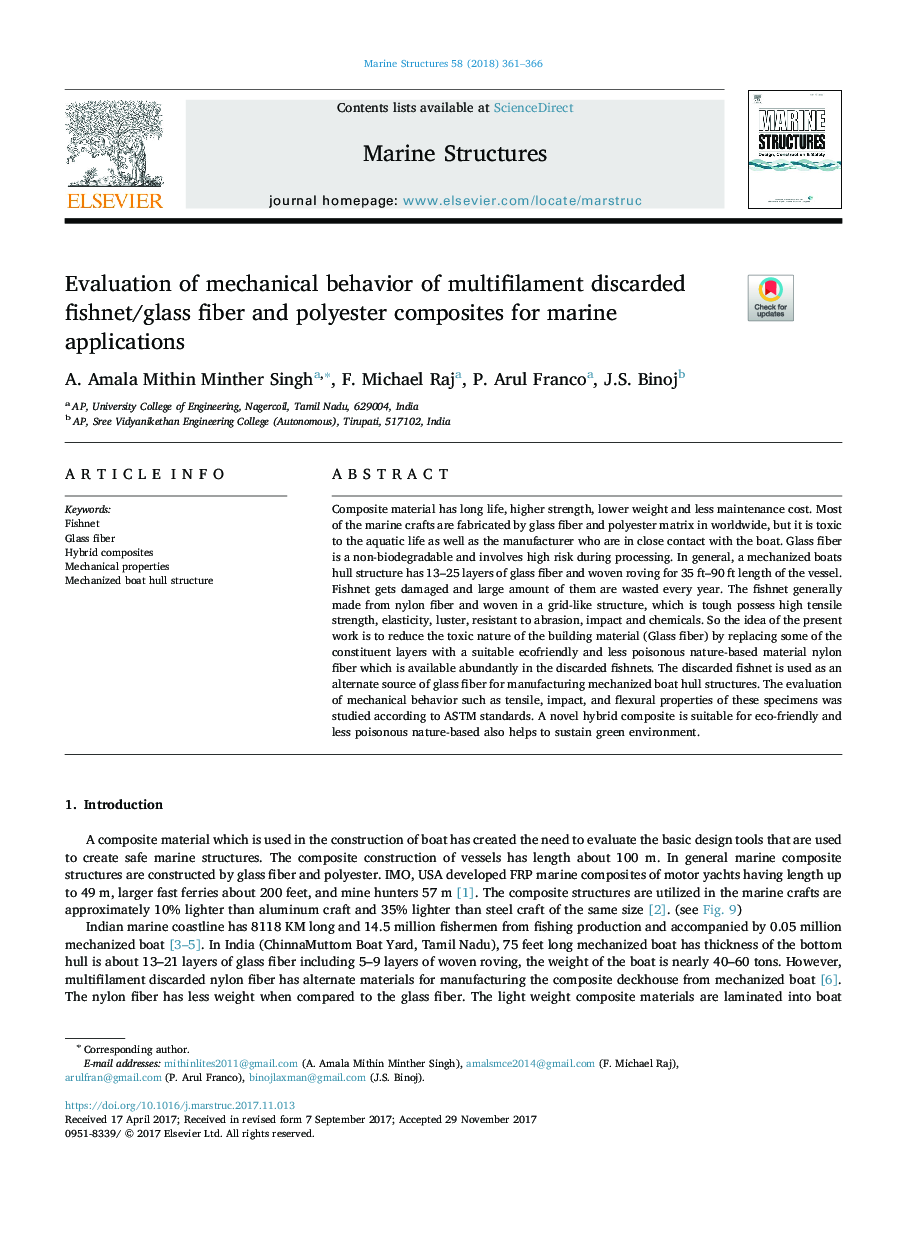| Article ID | Journal | Published Year | Pages | File Type |
|---|---|---|---|---|
| 6758070 | Marine Structures | 2018 | 6 Pages |
Abstract
Composite material has long life, higher strength, lower weight and less maintenance cost. Most of the marine crafts are fabricated by glass fiber and polyester matrix in worldwide, but it is toxic to the aquatic life as well as the manufacturer who are in close contact with the boat. Glass fiber is a non-biodegradable and involves high risk during processing. In general, a mechanized boats hull structure has 13-25 layers of glass fiber and woven roving for 35Â ft-90Â ft length of the vessel. Fishnet gets damaged and large amount of them are wasted every year. The fishnet generally made from nylon fiber and woven in a grid-like structure, which is tough possess high tensile strength, elasticity, luster, resistant to abrasion, impact and chemicals. So the idea of the present work is to reduce the toxic nature of the building material (Glass fiber) by replacing some of the constituent layers with a suitable ecofriendly and less poisonous nature-based material nylon fiber which is available abundantly in the discarded fishnets. The discarded fishnet is used as an alternate source of glass fiber for manufacturing mechanized boat hull structures. The evaluation of mechanical behavior such as tensile, impact, and flexural properties of these specimens was studied according to ASTM standards. A novel hybrid composite is suitable for eco-friendly and less poisonous nature-based also helps to sustain green environment.
Related Topics
Physical Sciences and Engineering
Engineering
Civil and Structural Engineering
Authors
A. Amala Mithin Minther Singh, F. Michael Raj, P. Arul Franco, J.S. Binoj,
